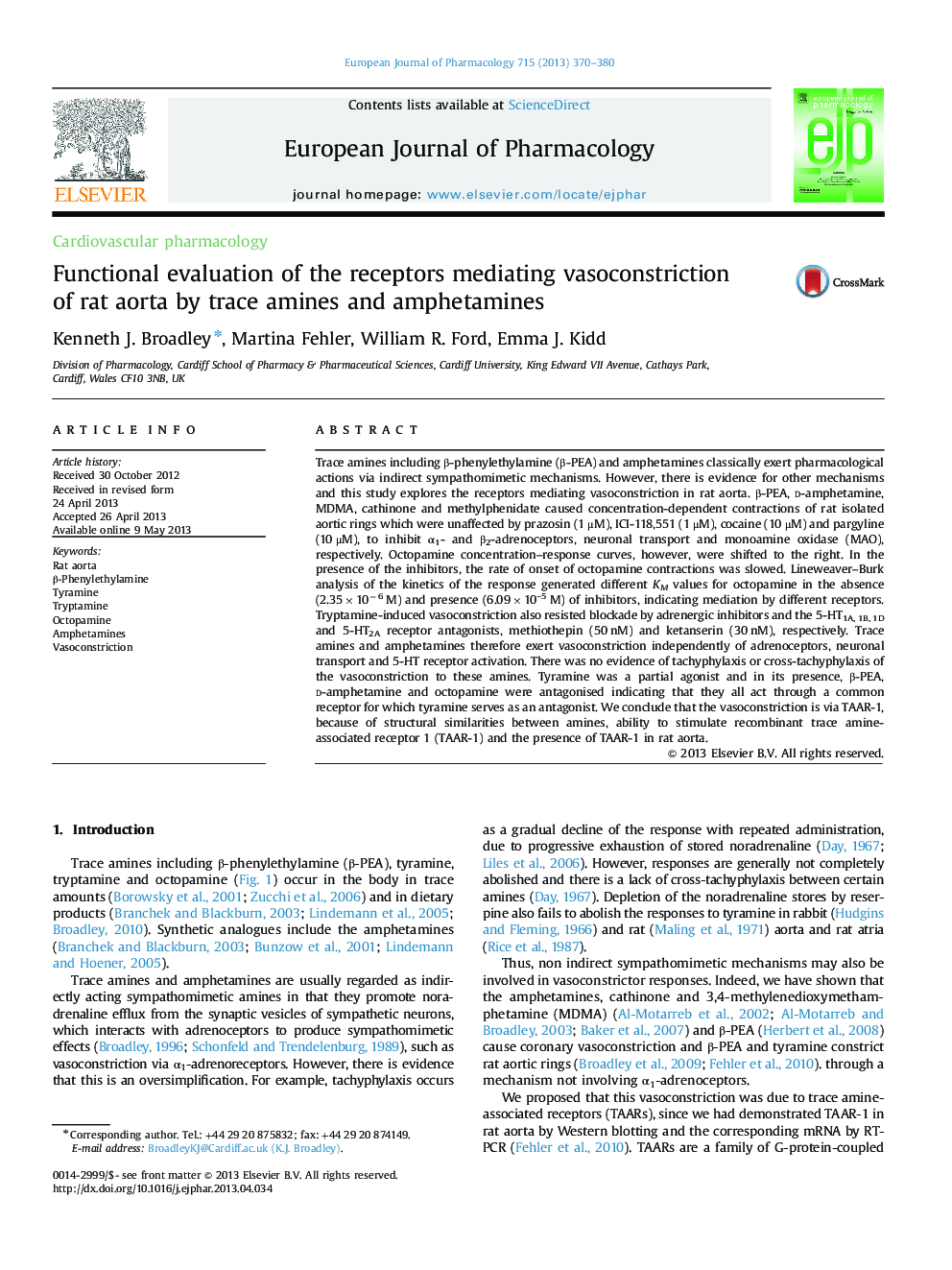| کد مقاله | کد نشریه | سال انتشار | مقاله انگلیسی | نسخه تمام متن |
|---|---|---|---|---|
| 2532076 | 1558966 | 2013 | 11 صفحه PDF | دانلود رایگان |

Trace amines including β-phenylethylamine (β-PEA) and amphetamines classically exert pharmacological actions via indirect sympathomimetic mechanisms. However, there is evidence for other mechanisms and this study explores the receptors mediating vasoconstriction in rat aorta. β-PEA, d-amphetamine, MDMA, cathinone and methylphenidate caused concentration-dependent contractions of rat isolated aortic rings which were unaffected by prazosin (1 μM), ICI-118,551 (1 μM), cocaine (10 μM) and pargyline (10 μM), to inhibit α1- and β2-adrenoceptors, neuronal transport and monoamine oxidase (MAO), respectively. Octopamine concentration–response curves, however, were shifted to the right. In the presence of the inhibitors, the rate of onset of octopamine contractions was slowed. Lineweaver–Burk analysis of the kinetics of the response generated different KM values for octopamine in the absence (2.35×10−6 M) and presence (6.09×10−5 M) of inhibitors, indicating mediation by different receptors. Tryptamine-induced vasoconstriction also resisted blockade by adrenergic inhibitors and the 5-HT1A, 1B, 1D and 5-HT2A receptor antagonists, methiothepin (50 nM) and ketanserin (30 nM), respectively. Trace amines and amphetamines therefore exert vasoconstriction independently of adrenoceptors, neuronal transport and 5-HT receptor activation. There was no evidence of tachyphylaxis or cross-tachyphylaxis of the vasoconstriction to these amines. Tyramine was a partial agonist and in its presence, β-PEA, d-amphetamine and octopamine were antagonised indicating that they all act through a common receptor for which tyramine serves as an antagonist. We conclude that the vasoconstriction is via TAAR-1, because of structural similarities between amines, ability to stimulate recombinant trace amine-associated receptor 1 (TAAR-1) and the presence of TAAR-1 in rat aorta.
Journal: European Journal of Pharmacology - Volume 715, Issues 1–3, 5 September 2013, Pages 370–380